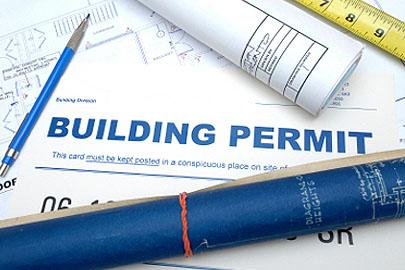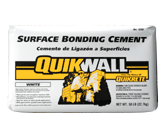Dry Stacked Block Certification Standards
Dry stacked block certification
This bilding medium has full certification in the building code. This building medium has been around for decades but never became popular. Today’s world has many reasons to consider dry stacked home construction as an economic alternative building medium. Especially when you consider Thermal Mass Home (TMH) design energy savings. I believe this building medium never became popular just because there was never any all inclusive documentation such as this website and this Book. I did not just assume that this was a good construction medium. Instead, I sought out factual certification based upon engineering standards before I commenced my project. Our book explains in more detail. These home construction engineering standards are contained within three primary USA document standards as listed below:

Standard Practice for Construction of Dry Stacked, Surface Bonded Walls
“ASTM C-946-91 (reapproved 2001)” (change -91 with any future revision year) is the dry stacked block certification standard. It is copyrighted so I can’t publish quotes directly from this standard. The standard can be purchased at aec.ihs.com for about $30.00.
The following is their description of the standard:
This practice covers material, workmanship, and construction procedures for applying surface bonded mortar to both sides of dry stacked concrete masonry blocks. It does not include grout, reinforcing, anchorage, or control joints since their use is essentially the same as conventional concrete masonry construction, unless specifically mentioned in this practice.
The values stated in inch-pound units are to be regarded as the standard. The values given in parentheses are provided for information only.
This standard does not purport to address all of the safety concerns, if any, associated with its use. It is the responsibility of the user of this standard to establish appropriate safety and health practices and determine the applicability of regulatory limitations prior to use.
The following is my list of their standards topics:
- SBC Storage
- Materials and Manufacture of blocks, mortar, SBC and shims
- Leveling courses (leveling block rows)
- Dry stacking physical parameters
- SBC mixing
- SBC application
- SBC curing and protection
Surface Bonding Product Data Sheet
This engineering data sheet can be obtained directly from the manufacturer. You can search for alternate SBC manufacturers on the Internet using the search phrase “surface bonding cement”. The Quikwall product that I used is manufactured by Quikrete, who’s website is www.quikrete.com.The data sheet for Quikwall can be found at SPEC_DATA-QUIKWALL.pdf. There is also a material safety data sheet located at MSDS-E2-PlastersAndCoatings.pdf. These data sheets provide the physical and structural engineering properties for the SBC and block walls bonded with this SBC. Here is additional info about SBC.

Local Building Code
Listed below are excerpts of local building code in the Florida building code:
Florida Building Code, Chapter 21 Masonry, Section 2105 Lateral Stability:
2105.3 Surface Bonded Walls – Dry stacked surface bonded masonry walls shall be of adequate strength and proportions to support all superimposed loads without exceeding allowable stresses listed in Table 1205.3.1. Table 1205.3.1 excerpts:
- Max compression = 40psi
- Max shear = 10psi
- Max flexural tension vertical span = 18psi
- Max flexural tension horizontal span = 30psi
2105.4 Construction. Construction of dry stacked, surface bonded masonry walls, including stacking and leveling of units, mixing and application of mortar, curing and protection, shall comply with ASTM C-946.
Throughout the building code, all references to concrete block also include dry stacked blocks.
Fire wall Standards
Southwest Research Labs in San Antonio, TX have reported to have certification that this wall has a fire rating of 4-hours. You can find in the Underwriter Laboratories UL-263 Standard that plain mortared block walls have a fire rating of only 3-hours if the sheet-rock is spaced at least 1/2″ away from block wall contact. I just include these references if you are looking for fire wall ratings sources which I didn’t need for my permits.
Standards Summary
It is interesting to note the following Quikwall data sheet specifications for SBC coated walls without rebar reinforcement versus S-type mortared walls:
- Compressive test for vertical loads on the wall is 350psi for SBC, and 540psi for S-mortar.
(although lesser than S-mortar, this load is not encountered by residential structure weight) - Flexural strength vertical span is 81psf for SBC, and 39psf for S-mortar.
(very important for earth bearing and wind forces loading) - Racking test ultimate load is 4155lb/ft for SBC, and 2995lb/ft for S-mortar.
(very important for seismic activity)
Real world wall strength proven by accident
Just how strong are these surface-bonded walls? One day I backed my 6000 pound Ford F250 diesel pickup truck into my wall by accident. This wall was five courses high (5 block rows), was surface bonded on the outside only and had no wall cell rebar reinforced concrete inside the wall. The strike was about 12 feet from the nearest wall corner. The tailgate was down on the pickup (which I had forgotten), and one corner of the tailgate struck the wall about four blocks high from the ground. When it struck I immediately feared that I would have to rebuild that section of the wall.
When I got out to check the damage, I had to look real hard to find a slight scuff on the wall, which had a little tailgate rust residue embedded into the scuff. Much to my surprise, the wall was not cracked nor was it damaged in any way. Without the rust residue, I never would have found this slight blemish. The corner of the pickup tailgate was bent and badly damaged.
False reviews on the Internet
Some forums on the Internet bad mouth dry stacked blocks as being weak. They have no knowledge of dry stacked block certification. They argue that a block can be easily cracked when there is no mortar to distribute the stress. That statement is true, but has nothing to do with surface bonded blocks. Using conventional mortar is much weaker. Surface bonding evenly distributes stress across the entire inside and outside surface of each block, which is 3.5 times larger in surface area (256 square inches). The narrow mortared bottom and end area of each conventional mortared block is only about 72 square inches. These 256 square inches are not just weak mortar, but fiber reinforced concrete.
The above false complaint about non mortared blocks cracking under stress, actually contributes to stronger SBC bonded walls. When you mortar a block wall or pour a concrete wall, this added wall weight on the concrete foundation causes foundation settling. Any foundation miniscule settling days later will result in additional wall stress which will result in wall cracks at mortar joints.
Dry stacked block walls can rest on the foundation weeks before being surface bonded. This allows any miniscule foundation settling from the wall weight to take place unimpeded. Later application of SBC locks all the blocks into one integral unit after foundation settling time. This SBC coated wall will have no internal stress from foundation loading.
Projectile Penetration Resistance
These surface bonded dry stacked walls demonstrate very good projectile penetration resistance. The fiber reinforced concrete SBC makes the wall surface much stronger than a normal concrete block wall surface. The millions of fiber strands are about 3/8″ in length and overlap, resulting in a mat sheathing on the wall. If a projectile penetrates the outer wall surface, it looses energy and is now unable to penetrate the inner wall surface. This is a valuable safety enhancement for home construction in extreme wind zones.
